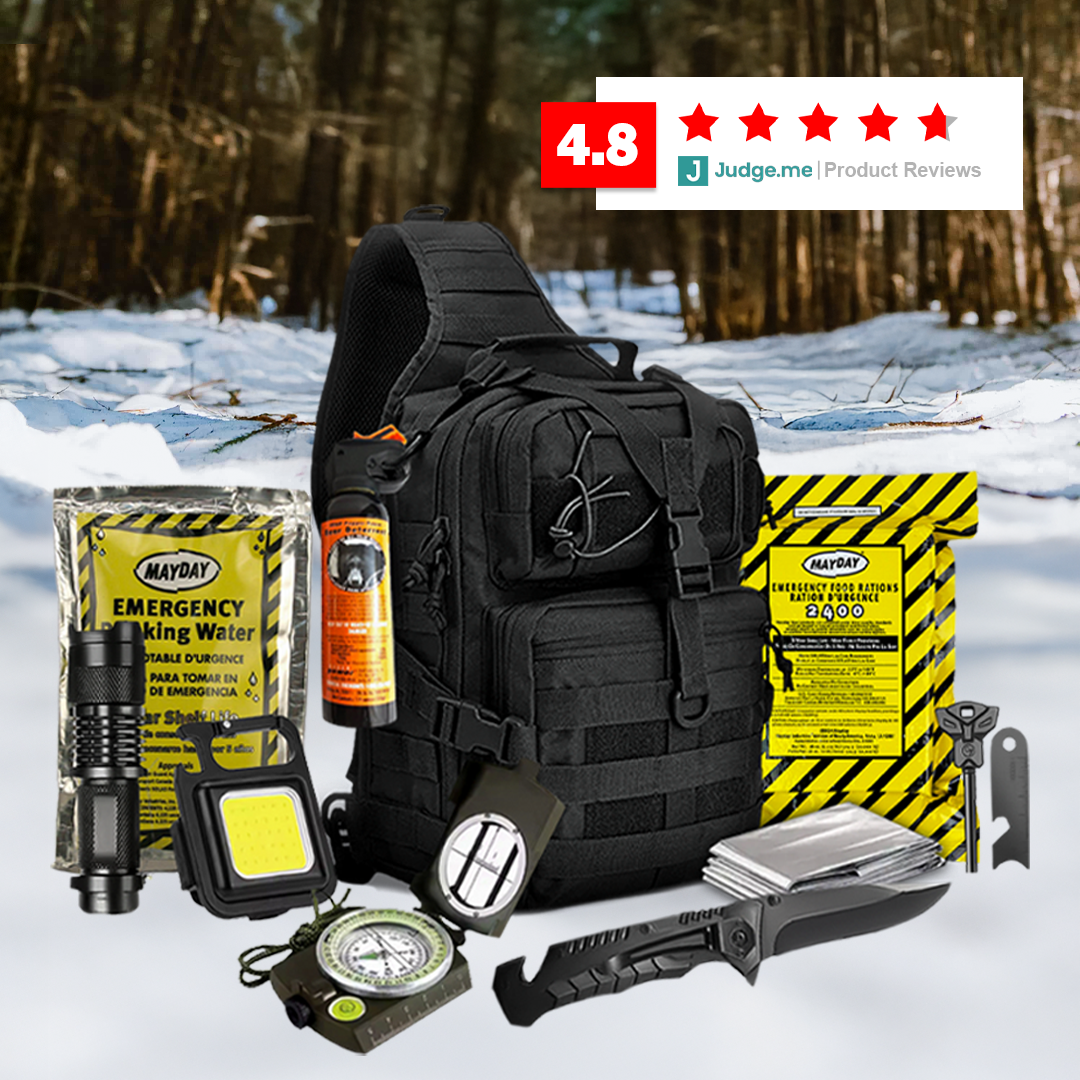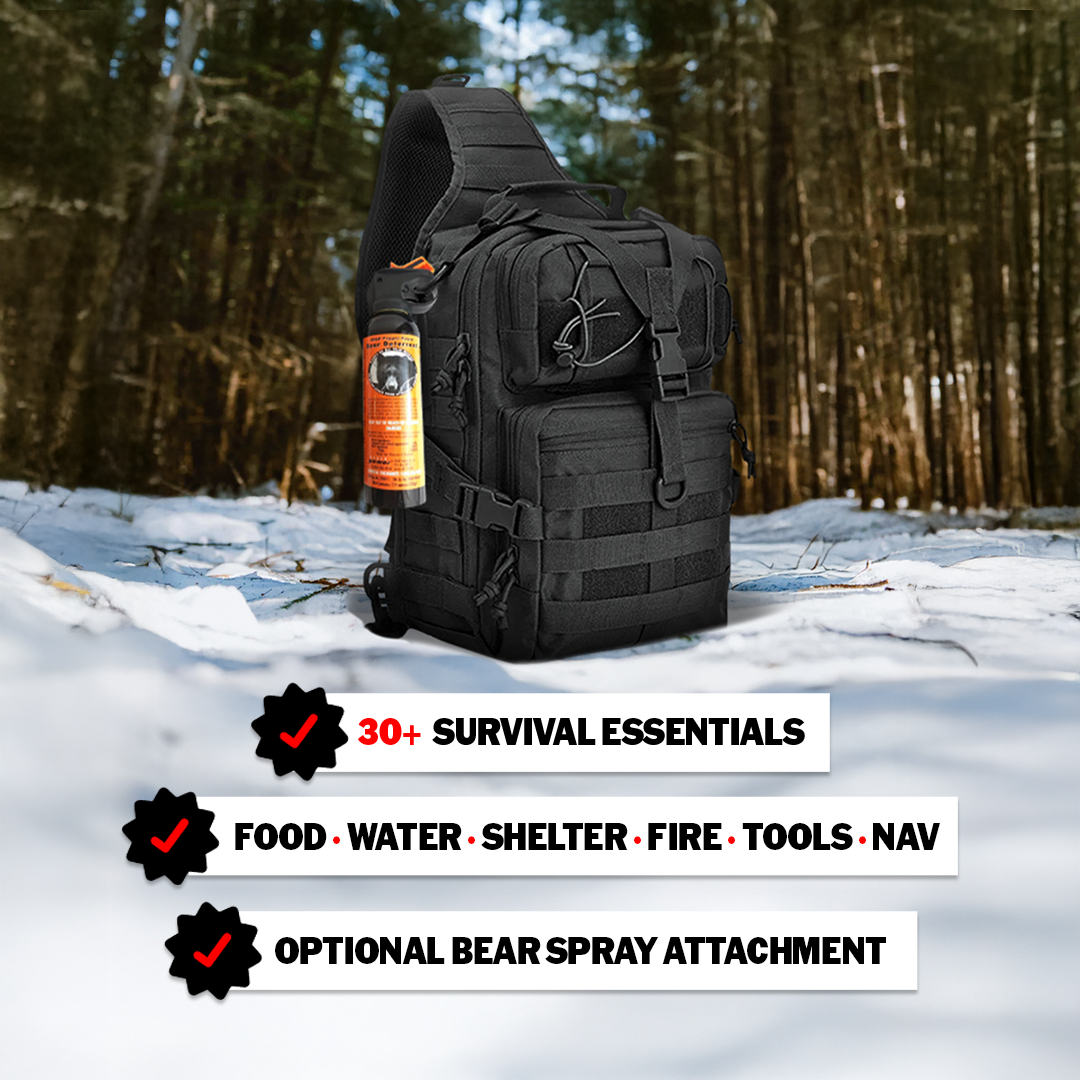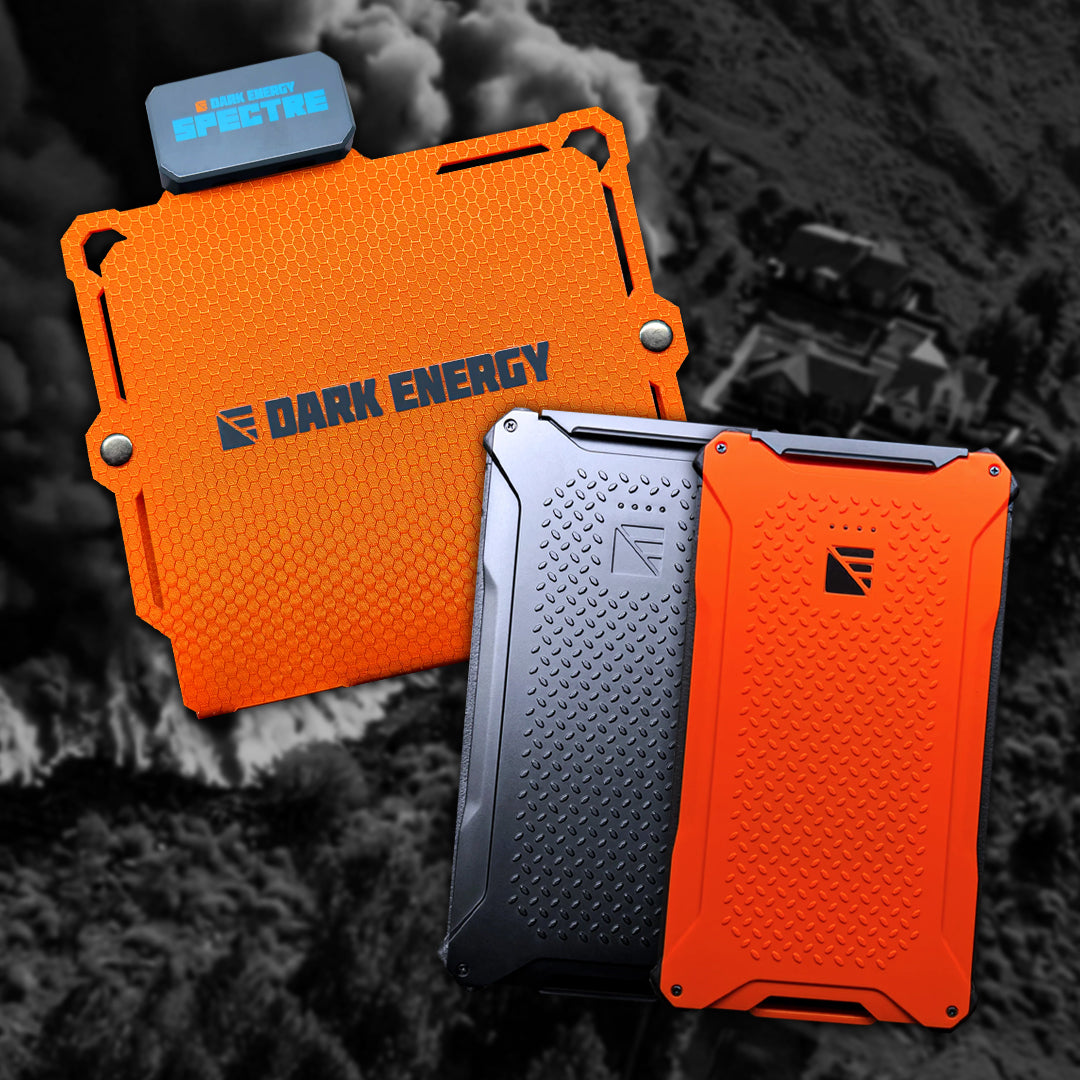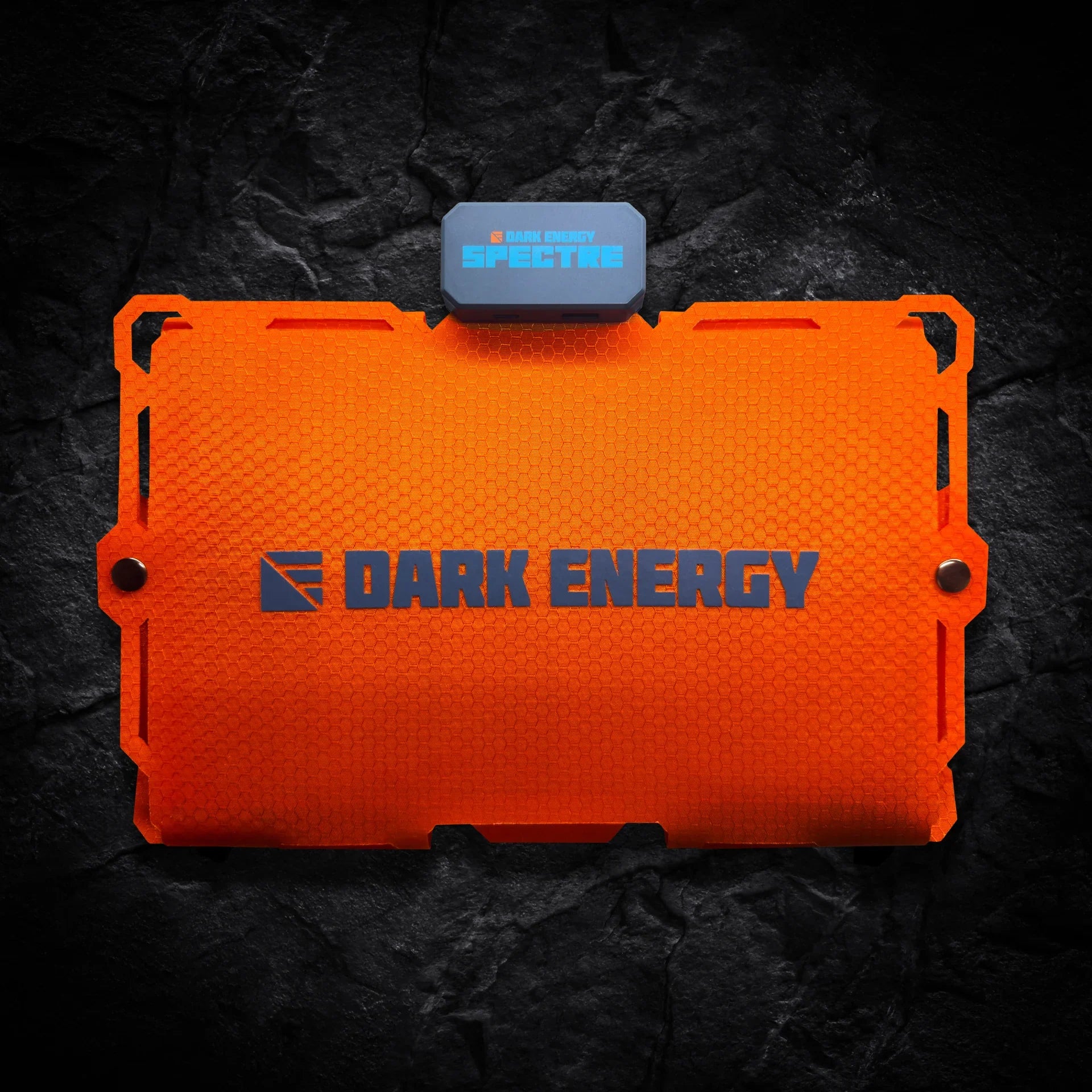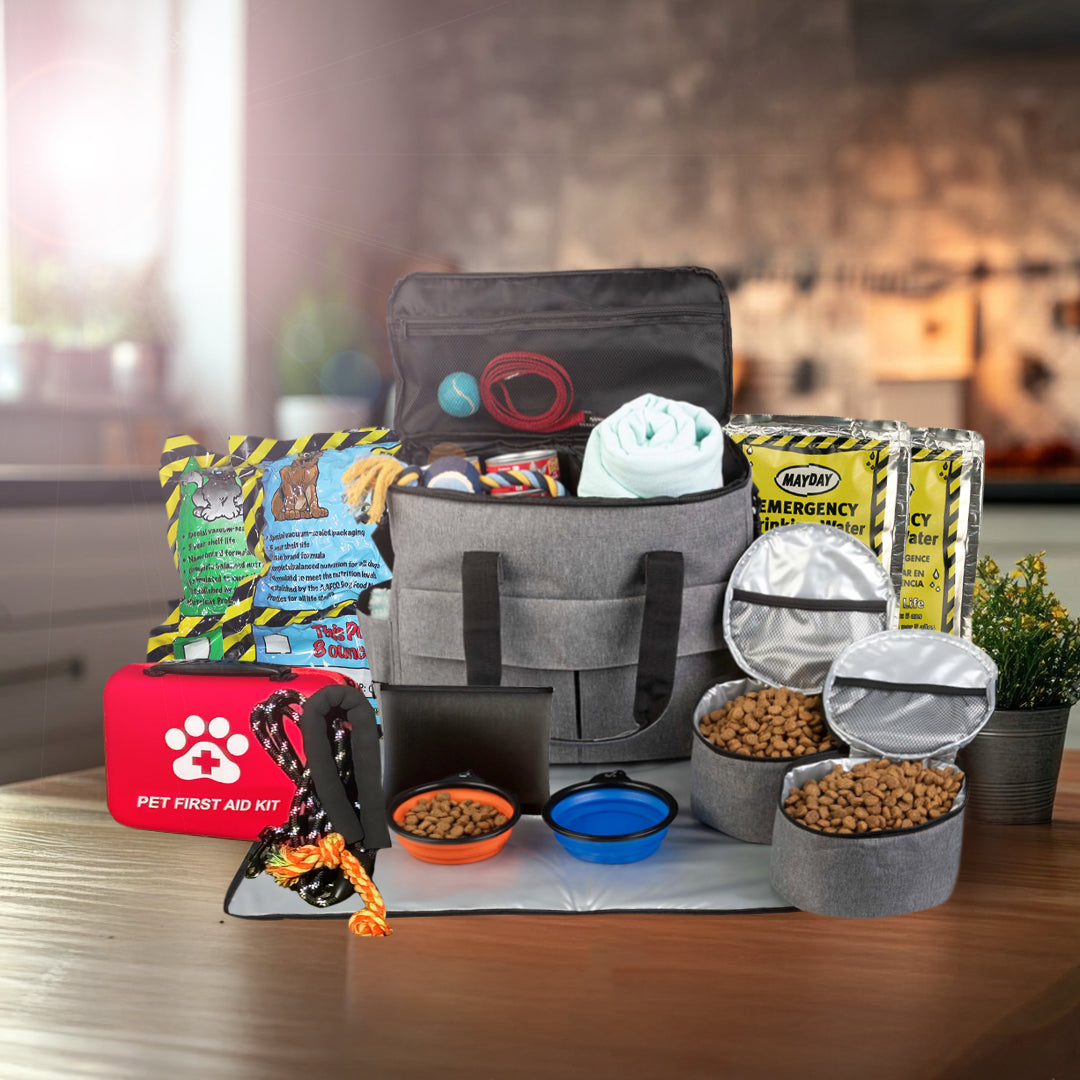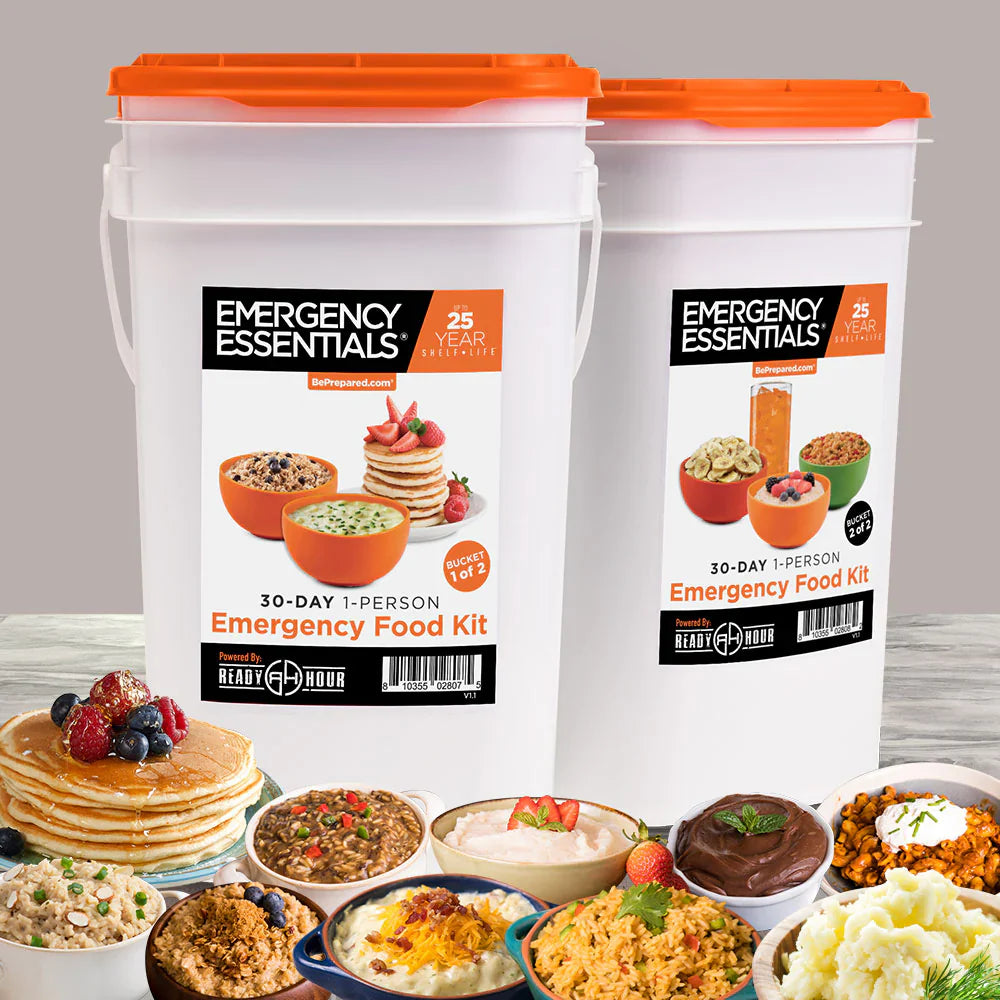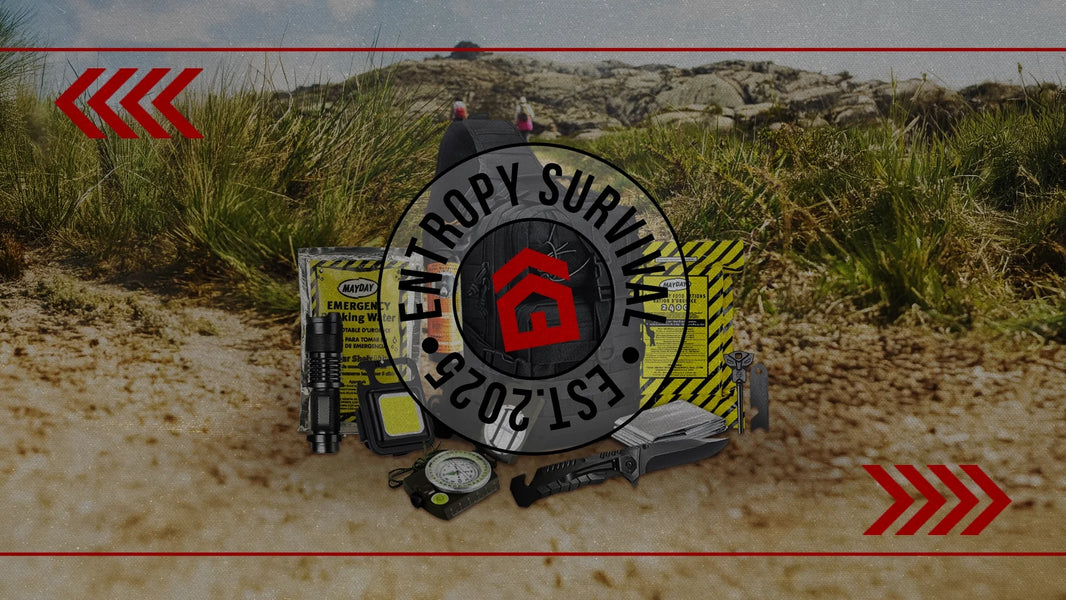Complete Guide to Obtaining, Using, and Maximizing Your GMRS License for Reliable Emergency Radio Systems
Introduction: GMRS Licensing for Emergency Preparedness
When disaster strikes, reliable communication can mean the difference between life and death. At Entropy Survival, we believe that robust emergency communications are a foundational element of any comprehensive preparedness strategy. Among the various options available, GMRS (General Mobile Radio Service) stands out as one of the most effective communication solutions for families and small groups preparing for emergency situations.
Unlike standard FRS radios or unreliable cell phones, GMRS radios offer extended range, higher power output, and the ability to use repeaters—but they require proper licensing from the Federal Communications Commission (FCC). This guide will walk you through everything you need to know about obtaining and using your GMRS license as part of your emergency readiness plan.
Our team of emergency preparedness experts at Entropy Survival, including several former military communications specialists, has compiled this comprehensive guide to help you navigate the licensing process and integrate GMRS communications into your overall preparedness strategy. Let's dive into the world of GMRS and discover why this communication option deserves a place in your Bug Out Plan.
Understanding GMRS: Your Emergency Communication Solution
What is GMRS?
GMRS stands for General Mobile Radio Service, a licensed radio service authorized by the Federal Communications Commission (FCC) for short-distance two-way communications. GMRS operates on specific UHF frequencies between 462 MHz and 467 MHz, providing reliable communications for personal and business activities.
Unlike amateur (ham) radio, GMRS doesn't require a technical examination. However, unlike FRS (Family Radio Service), it does require a license—but this license covers your entire immediate family, making it an excellent value for household emergency preparedness.
GMRS was originally established in the 1960s and has evolved over the decades into an accessible, powerful communication option. At Entropy Survival, we've seen firsthand how GMRS radios have provided critical communication capabilities during natural disasters when cell networks and internet services fail.
GMRS vs. Other Radio Services
When developing your emergency communications plan, it's important to understand how GMRS compares to other available options:
GMRS vs. FRS (Family Radio Service):
- FRS: No license required, but limited to 2 watts power output and non-detachable antennas
- GMRS: License required, allows up to 50 watts power output, detachable antennas, and repeater usage
GMRS vs. CB (Citizens Band):
- CB: No license required, operates on HF frequencies (27 MHz), limited to 4 watts, often experiences crowding
- GMRS: Operates on UHF frequencies with less interference, greater clarity, and higher power limits
GMRS vs. Ham Radio:
- Ham Radio: Requires technical exam, offers most frequencies and capabilities, but individual licenses only
- GMRS: Simple licensing process, family coverage, focused on specific frequencies ideal for tactical communications
Our Entropy Survival field testing confirms that GMRS offers the best balance of accessibility, range, and reliability for most family emergency scenarios. When integrated into our comprehensive Bug Out strategy, GMRS provides the communication backbone that connects family members during critical situations.
Benefits of Having a GMRS License
Investing in a proper GMRS license delivers several significant advantages for emergency preparedness:
Legal Access to Higher Power Transmissions
Without a license, you're restricted to using FRS radios with a maximum of 2 watts transmission power. With a GMRS license, you can legally operate radios with up to 50 watts power output. This dramatic increase in power translates directly to improved range and reliability—critical factors when communicating during emergencies.
Extended Range Communications
The combination of higher power and the ability to use detachable, high-gain antennas means your communications can reach much further. While basic FRS radios might give you 1-2 miles in optimal conditions, properly configured GMRS systems can achieve:
- 5-20+ miles between mobile units
- 20-40+ miles from base stations with elevated antennas
- Coverage across difficult terrain using repeaters
As part of your Bug Out Plan, this extended range ensures you can maintain contact with family members even when separated by significant distances during an evacuation.
Repeater Usage for Enhanced Coverage
Perhaps the most valuable benefit of GMRS licensing is the legal ability to use repeaters. A repeater receives transmissions and rebroadcasts them at higher power, effectively extending your communication range exponentially. This is particularly valuable in mountainous regions, urban environments with building interference, large properties or rural areas, and during regional emergency situations.
Many areas across the country have community GMRS repeaters that licensed users can access, creating regional communication networks that function independently of vulnerable infrastructure.
Family Coverage Under One License
A single GMRS license covers you, your spouse, children, grandchildren, parents, grandparents, and in-laws—essentially your entire immediate family. This represents significant value compared to ham radio, which requires individual licensing for each operator.
For a family implementing a comprehensive Bug Out Plan, this means every family member can legally operate GMRS equipment under a single license, simplifying your emergency communications strategy.
Step-by-Step License Application Process
Obtaining your GMRS license is straightforward. Follow these steps to secure your FCC authorization:
1. FCC Registration Requirements
To apply for a GMRS license, you must:
- Be at least 18 years old
- Not be a representative of a foreign government
- Provide a valid mailing address within the US
No technical examination is required, making this accessible to everyone regardless of technical background.
2. Creating an FCC CORES Account
Before applying for your license, you'll need to register with the FCC's Commission Registration System (CORES):
- Visit the FCC CORES website at https://apps.fcc.gov/cores/
- Click on "Register" to create a new account
- Complete the registration form to obtain an FRN (FCC Registration Number)
- Record your FRN, as you'll need it for the license application
Your FRN is a unique identifier that will be associated with all your FCC licenses and applications.
3. Completing the Application (Form 605)
With your FRN in hand, you can now apply for your GMRS license:
- Log in to the FCC's Universal Licensing System (ULS) at https://wireless2.fcc.gov/UlsEntry/
- Select "Apply for a New License" from the options
- For Application Purpose, select "New"
- For Radio Service Code, select "ZA - General Mobile Radio (GMRS)"
- Complete the required information, which will include:
- Your name and contact information
- Confirmation that you're not a representative of a foreign government
- Felony declaration (standard for all FCC applications)
4. Paying the License Fee
The current fee for a GMRS license is $70 (as of publication), and the license is valid for 10 years. This breaks down to just $7 per year—an exceptional value considering it covers your entire family and provides a decade of legal operation.
Payment can be made online via credit card during the application process. The FCC accepts Visa, MasterCard, American Express, and Discover.
5. Processing and License Activation
After submitting your application and payment, processing typically takes 5-7 business days, though it may sometimes be approved more quickly. You can check the status of your application by logging into the ULS system with your FRN.
Once approved, your license will be accessible in the ULS database, and you'll receive a reference copy via email. Your new GMRS license will include:
- Your unique call sign (which you'll use for station identification)
- The license effective date
- The license expiration date (10 years from issuance)
At Entropy Survival, we recommend printing your license and storing copies with each of your GMRS radios as part of your comprehensive documentation system.
GMRS Rules and Regulations: Understanding Your Responsibilities
As a licensed GMRS operator, you must adhere to specific FCC regulations. Here are the key rules to understand:
Authorized Frequencies
GMRS operates on 22 channels in the 462 MHz and 467 MHz UHF bands:
- 16 main channels (462.550 - 462.725 MHz in 25 kHz steps)
- 8 repeater input/output channel pairs
It's important to note that channels 1-7 and 15-22 are shared with FRS. The remaining channels are exclusively for GMRS.
Power Limitations
GMRS allows for significantly higher power than FRS:
- Up to 50 watts on main channels (462 MHz)
- Up to 5 watts on interstitial channels (467 MHz)
However, for emergency preparedness, we at Entropy Survival generally recommend radios in the 5-25 watt range for most practical applications, balancing range with battery efficiency.
Antenna Requirements and Options
GMRS allows detachable antennas, which provides tremendous flexibility for range enhancement. Your options include:
- Standard "rubber duck" antennas for portable operation
- 1/4 wave, 1/2 wave, or 5/8 wave whip antennas for mobile units
- High-gain directional or omnidirectional antennas for base stations
For maximum effectiveness in emergency situations, our testing at Entropy Survival has shown that a combination of radio types with appropriate antennas yields the most robust communication system.
Required Station Identification
The FCC requires that you identify your station by transmitting your assigned call sign:
- At the end of a transmission or series of transmissions
- At least every 15 minutes during longer communications
- Using voice identification (no Morse code requirement)
This simple requirement helps maintain order on the airwaves and is particularly important during emergency situations.
Prohibited Communications
GMRS licenses prohibit certain types of communications:
- Business operations (except for certain grandfathered licenses)
- False distress calls
- Obscene or profane language
- Selling products or services
- Continuous tone-only transmissions exceeding 15 seconds
These restrictions help ensure the service remains available for its intended personal and emergency use.
GMRS as Part of Your Emergency Preparedness Plan
At Entropy Survival, we advocate for a comprehensive approach to emergency preparedness. GMRS communications should be integrated into your overall Bug Out Plan, complementing other preparations.
Creating a Family Communication Plan
Every family needs a clear communications protocol for emergencies. Start by establishing primary and backup channels for different scenarios. Consider designating specific channels for different types of communication—routine check-ins versus emergency alerts, for example.
Create a regular check-in schedule to maintain contact during extended emergencies. In our field testing, we've found that scheduled communications help maintain order and reduce anxiety during stressful situations. They also help conserve battery power by eliminating the need for constant monitoring.
Clear, concise communication procedures are essential for effective emergency communications. Decide in advance what information needs to be shared and how it should be communicated. Brief, information-dense transmissions serve you better than lengthy conversations during emergencies.
Practice makes perfect when it comes to radio communications. Regular radio checks ensure not only that your equipment remains functional but also that all family members remain comfortable with proper radio procedures. We recommend monthly practice sessions at minimum, with more frequent drills as you approach high-risk seasons for your area.
Document your communication procedures in your family's Emergency Action Plan. This written record ensures everyone understands the protocols even under stress, and it serves as a valuable reference for less-experienced family members.
Integrating GMRS Into Your Bug Out Strategy
A complete Bug Out strategy includes four essential components: the Bug Out Bag (BOB), Bug Out Vehicle (BOV), Bug Out Location (BOL), and Bug Out Plan (BOP). Effective GMRS implementation touches each of these elements.
Your Bug Out Bag should include a handheld GMRS radio with spare batteries and possibly a compact antenna upgrade. This ensures you maintain communications capability even when separated from your vehicle or primary equipment.
Every Bug Out Vehicle benefits from a properly installed mobile GMRS unit. The increased power and better antenna options dramatically improve your communications range while traveling. Vehicle power also eliminates immediate battery concerns, though backup power options remain important.
At your designated Bug Out Location, a well-designed base station creates a communications hub for your operations. Enhanced antennas at fixed locations can dramatically extend your effective communication range, allowing you to maintain contact with family members across a much wider area.
Your comprehensive Bug Out Plan should detail specific communication protocols for various scenarios. Who communicates with whom, when check-ins occur, what information must be shared, and what actions follow failed communications attempts are all essential elements of a thorough communications plan.
GMRS for Neighborhood Emergency Networks
Beyond family communications, GMRS can form the backbone of neighborhood emergency response networks. Consider coordinating with neighbors who also have GMRS capabilities to establish community channels and procedures. Many neighborhoods have found success creating local emergency response teams using GMRS as their primary communication method.
Local GMRS repeaters can significantly enhance these community networks. Research available repeaters in your area and incorporate them into your emergency communications plan. Some communities have even established their own GMRS repeaters specifically for emergency use.
These local connections often prove invaluable during widespread disasters. When official response resources become stretched thin, neighborhood communication networks help coordinate local resources and mutual aid. The relationships developed through these networks often prove as valuable as the technical capabilities they provide.
Equipment Recommendations for GMRS Emergency Communications
Selecting the right GMRS equipment is critical for building a reliable emergency communications system. At Entropy Survival, we've field-tested numerous configurations to determine the optimal setup for most scenarios.
Types of GMRS Radios
GMRS radios come in three primary configurations, each serving different purposes in your communications strategy. Let's explore how each type fits into a comprehensive emergency communications plan.
The most familiar type for most people is the handheld unit. These compact radios typically offer 1-5 watts of power and are essential for individual mobility. We've found through our field testing at Entropy Survival that a quality handheld GMRS radio belongs in every Bug Out Bag. They're perfect for staying connected while on the move, whether you're scouting an area or simply separated from your group temporarily.
Vehicle-mounted mobile units represent the next tier in capability. With power outputs of 15-40 watts, these radios provide significantly improved range over handhelds. Our emergency preparedness specialists strongly recommend equipping every Bug Out Vehicle with a quality mobile GMRS radio connected to an external antenna. This transforms your vehicle into a mobile communications hub during evacuation scenarios.
For your home or designated Bug Out Location, a base station delivers maximum capability. These units can utilize the full 50 watts allowed by GMRS regulations and connect to optimized, permanently mounted antennas. The extended range of a properly installed base station creates a communications umbrella for your entire operation area.
In our experience working with countless families on emergency preparedness, we've found that a layered approach works best. Rather than choosing just one type, consider how each serves different purposes within your overall communications plan. The handheld keeps you connected on foot, the vehicle unit extends your range while mobile, and the base station creates a reliable communications hub. This comprehensive approach ensures you maintain contact regardless of the scenario you face.
Key Features for Emergency-Ready GMRS Radios
When selecting GMRS equipment for emergency use, certain features stand out as particularly valuable. Weather alert capability tops our list at Entropy Survival, as automatic alerts for severe weather warnings can provide crucial advance notice of changing conditions. You'll also want multiple power settings to balance range and battery conservation depending on your situation.
A quality scanning function proves invaluable during emergencies, allowing you to monitor multiple channels for information. We've found during our field exercises that the ability to quickly scan and locate active channels can make a significant difference in gathering situational awareness.
The physical construction of your radio matters tremendously in emergency situations. Look for water and impact resistance that will survive the rough handling and adverse conditions that often accompany disasters. Similarly, battery life becomes a critical consideration during extended power outages. The last thing you want during an emergency is a radio that dies when you need it most.
The radios we've included in the Entropy Survival Safe House Kit reflect these priorities, having been selected through rigorous field testing in challenging environments. We've personally tested each model in scenarios ranging from torrential downpours to freezing conditions to ensure reliability when it matters most.
Antenna Considerations for Maximum Range
The antenna is often the unsung hero of radio communications. In our experience, many people invest in expensive, high-powered radios but neglect this critical component. The truth is that antenna selection and placement often matter more than raw power output. Our testing has consistently shown that a modest radio with a well-positioned antenna will outperform a powerful radio with a poor antenna setup.
For handheld units, consider upgrading from the stock "rubber duck" antennas to 1/4 wave whips, which can substantially improve your effective range. When installing antennas on vehicles, height becomes your friend. Mount them at the highest practical point to extend your communication range significantly.
Base station installations benefit tremendously from elevated, outdoor antenna positioning. During our field exercises, we've documented range improvements of up to 300% simply by moving an antenna from inside a building to an elevated external mount. If you're serious about emergency communications, investing in a proper antenna installation for your home or Bug Out Location delivers exceptional returns.
Another consideration is the gain rating of your antenna. Higher gain antennas focus energy horizontally rather than wasting it skyward, extending your ground-level communication range. This horizontal focus proves particularly valuable in the relatively flat UHF spectrum that GMRS occupies.
Power Sources and Battery Backup Options
In our years of emergency response experience at Entropy Survival, we've observed that communications failure during emergencies most often results from power issues rather than equipment problems. Developing a robust power strategy for your GMRS system is essential for reliable emergency communications.
Rechargeable battery packs serve as the primary power source for handheld units, offering a good balance of capacity and weight. However, we always recommend carrying alkaline battery adapters as a backup option when recharging isn't possible. Nothing is more frustrating than having functioning equipment rendered useless by power depletion.
For sustainable power during extended emergencies, portable solar chargers have proven extremely valuable in our field testing. Modern solar options have become remarkably efficient, allowing you to maintain communications capability even during extended grid-down scenarios. Vehicle power serves as another reliable option, with direct 12V connections for mobile units providing consistent power while your vehicle runs.
For base stations, consider how you'll maintain operations during extended power outages. Generator backup, particularly when coupled with fuel stabilization practices, ensures your communications hub remains functional when it's needed most. The communications packages we've developed at Entropy Survival include redundant power options precisely because we understand how critical uninterrupted service becomes during emergencies.
Practical GMRS Usage Tips
Owning properly licensed GMRS equipment is only the beginning. Effective emergency communications require practice and protocol development.
Effective Radio Protocols and Etiquette
Good radio communication habits can make all the difference during an emergency. The most fundamental practice is to listen before transmitting. Taking a moment to listen to the channel helps you avoid interrupting emergency traffic that might already be in progress. At Entropy Survival, we emphasize this habit in all our communications training.
Keeping your transmissions brief and to the point conserves battery power and reduces channel congestion. During emergencies, clear and direct communication becomes especially important. We recommend using plain language rather than codes or jargon in emergency situations, as this ensures everyone can understand critical information regardless of their experience level.
Many new GMRS users forget the importance of transmission discipline. Ending each transmission with "over" serves a practical purpose—it clearly indicates you're finished speaking and waiting for a response. This simple habit prevents confusion and lost information during critical exchanges.
Remember to properly identify your station according to FCC requirements, which means using your call sign at appropriate intervals. While this is a legal requirement, it also helps establish order during emergency communications when multiple parties may be using the same frequencies.
Range-Extending Techniques
Geography plays a major role in radio performance. Whenever possible, operate from elevated positions to significantly extend your range. The difference in transmission distance between operating in a valley versus on a hilltop can be dramatic. During our field exercises at Entropy Survival, we've documented range improvements of 300-400% simply by gaining elevation.
Repeaters offer another powerful range extension option when available in your area. Familiarize yourself with local GMRS repeaters before emergencies occur, and program their frequencies into your radios for quick access during critical situations.
Antenna orientation matters more than many people realize. Maintaining vertical orientation for most GMRS antennas ensures optimal performance, as these systems are designed for vertical polarization. A properly oriented antenna will significantly outperform one that's positioned incorrectly, even if all other factors are identical.
For mobile operations, your vehicle's metal roof creates an excellent ground plane that can enhance antenna performance. When possible, center-mount your mobile antenna on the vehicle roof rather than on the fender or bumper for maximum effectiveness.
Always carry spare antennas in your emergency communications kit. Antennas are among the most vulnerable components of any radio system, and having replacements available ensures a broken antenna won't render your entire communications system useless.
Weather-Proofing Your Communications
Emergency situations often coincide with harsh weather conditions, making equipment protection essential. Quality water-resistant cases provide crucial protection for portable radios. The cases included with Entropy Survival communication kits are specifically selected to withstand the challenging conditions often encountered during emergencies.
Many preparedness-minded individuals overlook EMP (Electromagnetic Pulse) protection. Storing backup communications equipment in EMP-protected containers provides insurance against both natural and man-made electromagnetic threats. While such events are rare, their potential impact on electronic equipment makes this precaution worthwhile for serious preparedness planning.
For base station installations, proper lightning protection represents an essential investment. An unprotected antenna system can channel lightning directly into your equipment and home during storms. Installing appropriate lightning arrestors and grounding systems protects both your communications equipment and your safety.
Regular maintenance according to manufacturer specifications helps ensure your equipment functions when needed most. This includes cleaning, battery conditioning, and periodic operational checks. At Entropy Survival, we recommend establishing a quarterly maintenance schedule for all communications equipment, with additional checks after any exposure to harsh conditions.
Perhaps most importantly, conduct regular system testing. The worst time to discover equipment issues is during an actual emergency. Establish a regular schedule for testing all communications equipment, and involve all family members in these tests to ensure everyone knows how to operate the systems properly.
Frequently Asked Questions About GMRS Licensing
We often hear similar questions from our customers at Entropy Survival when they're considering adding GMRS communications to their preparedness strategy. Let's address some of the most common concerns.
Many people wonder about the duration of their GMRS license. Your license remains valid for a full decade from the date of issue, making it one of the most cost-effective communications investments available. After that ten-year period, you'll need to submit a renewal application to continue legal operation. Fortunately, the renewal process is straightforward and typically costs the same as the initial application.
A fantastic benefit of GMRS licensing is its family coverage. Unlike ham radio, which requires individual licensing for each operator, a single GMRS license covers your entire immediate family. This includes your spouse, children, parents, grandparents, and in-laws. For families developing a comprehensive emergency preparedness plan, this represents significant value and simplicity.
Some customers ask whether they can use their GMRS license for business operations. Generally, the answer is no. GMRS is intended primarily for personal and family use. Business operations typically require different licensing under Part 90 of FCC regulations. There are some grandfathered exceptions, but for most new licensees, GMRS should be considered a personal and emergency communications service rather than a business tool.
One of the most frequent questions concerns communication range. The truth is that range varies significantly based on your equipment, antenna height, terrain, and conditions. In our field testing, we've documented typical ranges of 1-5 miles for handheld-to-handheld communications, 5-15 miles between mobile units, and 10-30+ miles from a base station to mobile units. When using repeaters, these ranges can extend dramatically to 30-100+ miles under favorable conditions.
People often ask if they need separate licenses for multiple radios. The answer is a definitive no. Your GMRS license covers any number of radios operated by you and your family members. This means you can equip each family member with their own radio, install units in multiple vehicles, and establish base stations at different locations—all under a single license.
Finding local GMRS repeaters is another common concern. Several online databases list GMRS repeaters by location, with myGMRS.com maintaining one of the most comprehensive listings. We recommend researching available repeaters in both your home area and any planned evacuation routes or destinations. This advance knowledge can significantly enhance your communications capabilities during an emergency.
Final Thoughts: Getting Started with GMRS for Emergency Preparedness
Effective communication is a cornerstone of comprehensive emergency preparedness. By obtaining your GMRS license and integrating appropriate radio equipment into your preparedness strategy, you've taken a significant step toward ensuring your family's safety during critical situations.
At Entropy Survival, we believe that preparation creates peace of mind. Our emergency communication solutions, including premium GMRS radio packages in our Safe House Kit, provide the reliable connectivity needed when conventional communication systems fail.
Ready to enhance your emergency communications capability? Explore our selection of field-tested GMRS equipment, designed specifically for incorporation into comprehensive Bug Out preparations. Each radio in our inventory has been selected based on real-world emergency performance, durability in harsh conditions, and integration with other preparedness systems.
Remember that communications technology is only as effective as your ability to use it properly. Practice regularly with your family, develop clear protocols, and integrate your GMRS capabilities into regular preparedness drills. When emergency strikes, your familiarity with this equipment may make the critical difference between confusion and coordinated action.
Make sure to check out more articles in our News & Views section. Feel free to reach out any time to see how Entropy Survival can help you prepare you and your family for any disaster or survival scenario.




